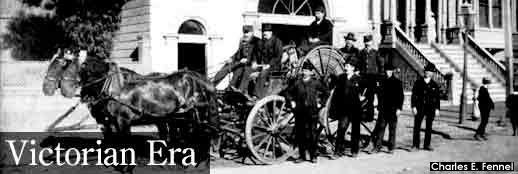When
the officer working at the central station received the alarm,
he would wait to hear it twice, then, using a telegraph key,
transmits the box code twice to every alarm circuit in the city.
He would then, over radio, contact the Police department and
announces the box number twice. If the fire truck had to cross
Market Street, he would sound the traffic warning bells .
In the fire station, the officer
in the telegraph office would receive the telegraphed signal.
If he did not know what street the box number received was on,
he would have to go through a large file cabinet that contained
a card for each box in the city. Firefighters were not expected
to know all the box numbers in the cities, but were expected
to know to which boxes their fire station was the first or second
response unit. In every station, there were the older firefighters
that knew every box code in the city. For those firefighters
that didn’t know every box location, the box cards, or
running cards, were provided. On these cards, there was the
box number, its street address and cross streets, and which
engines, trucks, and hook and ladder companies were to respond
to the scene first, second, and so on. Every box had the capability
of requiring up to five fire stations in the city, but generally
the first two fire stations would respond to the scene. Once
at the scene, if more fire trucks were needed, the fire chief
at the scene would use a tapper in the box to call for backup.
This signal would again be sent to the dispatch office, and
the cycle would start again.
|
| 
|

|
|
 |





